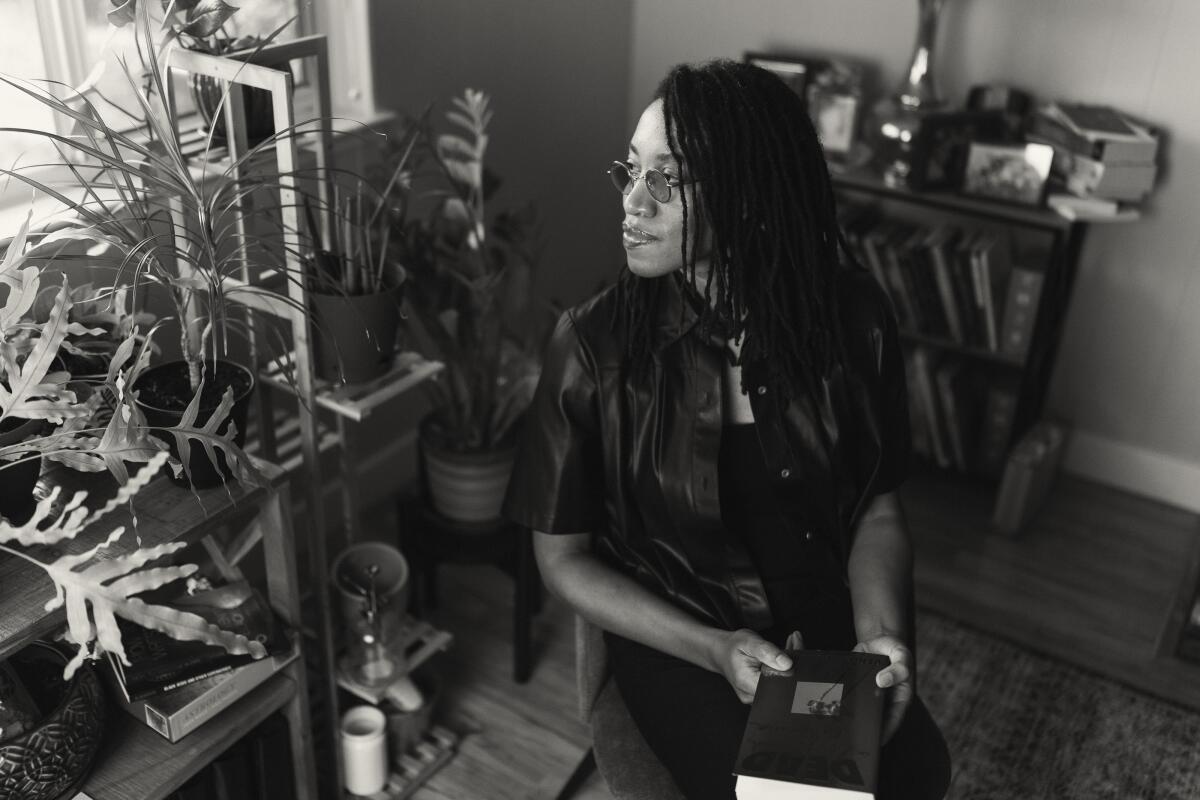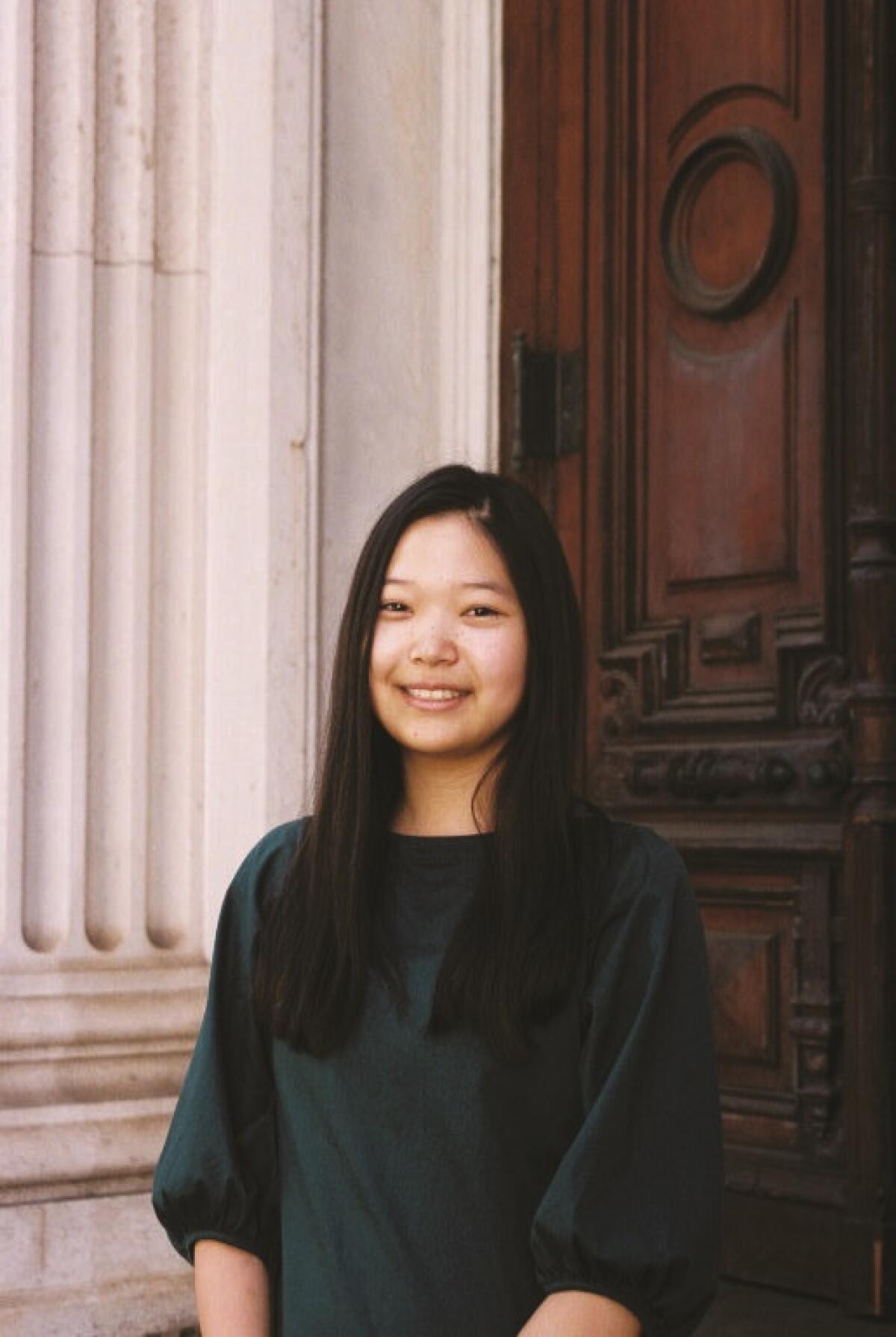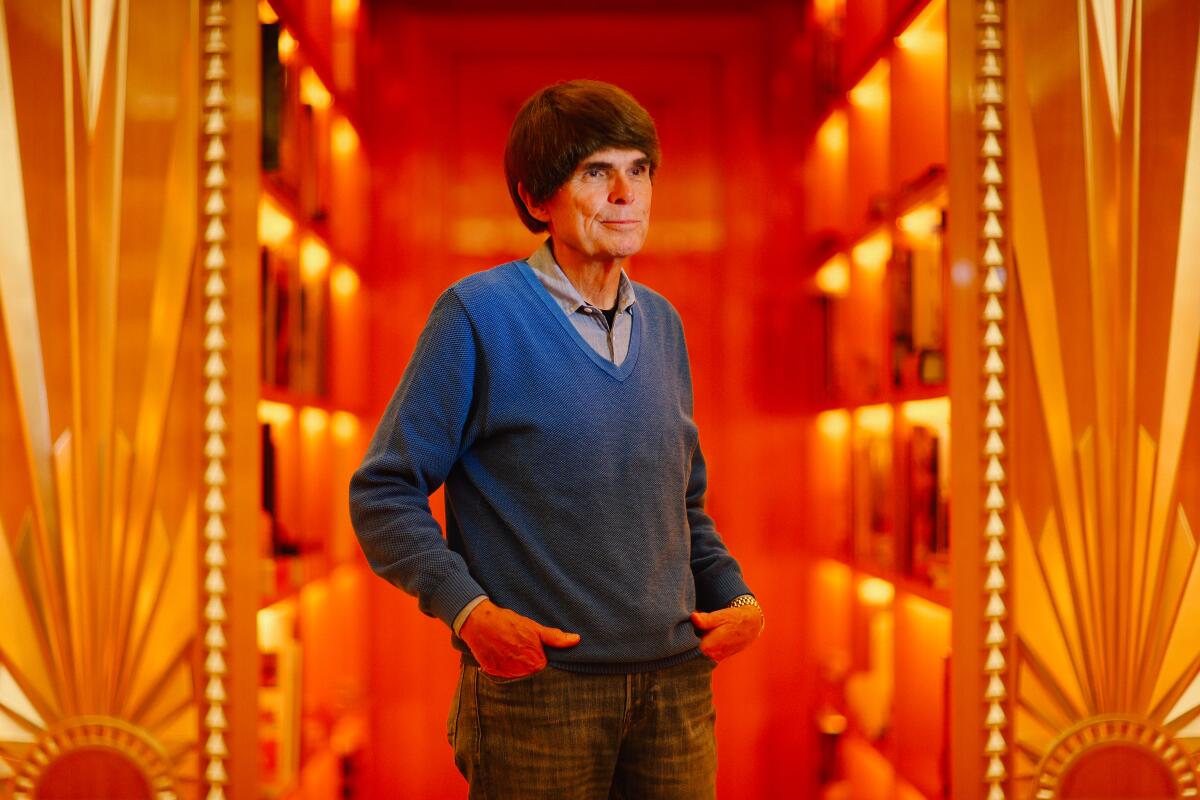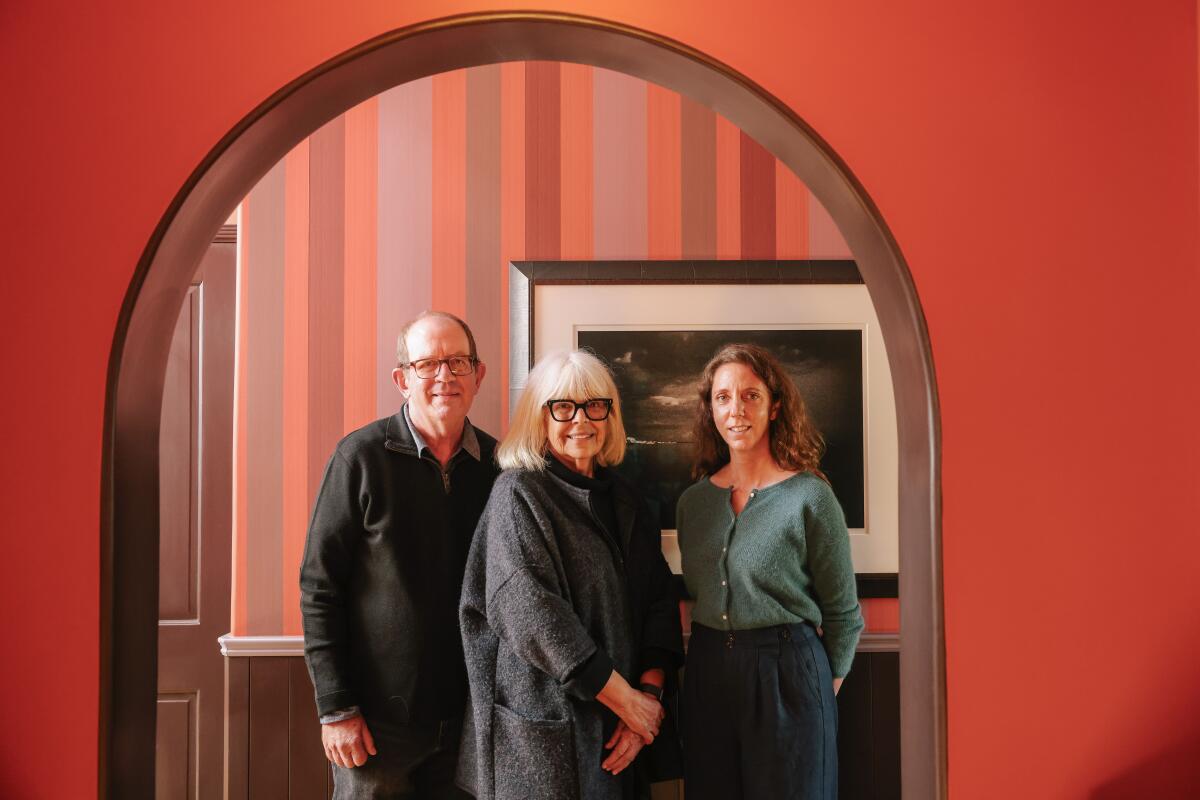The best really short stories — and the LAPL’s new publishing side hustle

Novelist Venita Blackburn breaks down her “flash fiction” favorites, the L.A. Public Library becomes a publisher — and more in our Book Club newsletter.
Book Club Newsletter
Short-fiction picks and more
If you buy books linked on our site, The Times may earn a commission from Bookshop.org, whose fees support independent bookstores.
Good morning and welcome back to the L.A. Times Book Club newsletter.
I’m Boris Kachka, the books editor at the Los Angeles Times, and I’m in the mood for fiction — lots of it. Fortunately, my TBR pile is freshly stocked for 2024. New work from Claire Messud? Sheila Heti? Tommy Orange? Anne Carson? Percival Everett? Helen Oyeyemi? Yes, please and thank you.
You’re reading Book Club
An exclusive look at what we’re reading, book club events and our latest author interviews.
You may occasionally receive promotional content from the Los Angeles Times.
Most enticing of all are the debuts. Yes, publishing loves an upstart phenom, and too many second and third books by brilliant authors are starved of marketing. But there’s no denying the human compulsion toward fresh discovery. One of these first novels is the subject of a meaty profile by Times arts and design columnist Carolina A. Miranda: “Dead in Long Beach, California,” by Venita Blackburn.
Blackburn, 40, isn’t exactly a newbie; she made her name first in very short stories — sometimes known as “flash fiction.” The Compton-raised author was earning her fiction MFA at Arizona State University when she came across “Flash Fiction: 72 Very Short Stories,” a 1992 collection of short-shorts that launched the form into the mainstream.
As quick assignments to read or write, such stories are popular in writing workshops and, as Blackburn notes, easier to place in journals. On the flip side, publishers prefer novels, which generally sell better. Blackburn’s novel fulfills the two-book publishing deal in which she sold her story collection “How to Wrestle a Girl” to Farrar, Straus & Giroux.
But what exactly is “flash fiction”? Not unlike “autofiction,” it can be a slippery phrase and a loaded one. Some practitioners never use it; others gladly popularize it, tracing it back to ancient folk tales. I followed up with Blackburn to ask how she defines it, how it’s guided her work and what makes her list of top flash-fiction stories.
Isn’t flash fiction just very short stories?
Flash fiction is definitely a very short story, but there is a difference between that and other short prose forms. There are constraints on space, yes, but that means there has to be an economy of purpose in every line that still addresses the fundamental needs of narrative. Flash has to have a significant swell of meaning that reaches out beyond the characters and into the whole of human existence — in under 1,000 words. Easy. OK, it’s not easy but very fun. The word count is debatable, but 1,000 words is my max.
“Dead in Long Beach” is a complex, many-layered novel. How did your work in flash fiction help you write such a different beast?
I think my experience with flash kept me sane while writing this book. Novels are daunting tasks for someone like me, who likes to have more control over what is happening in the story at any moment. A novel requires me to let go of so much content at any given time, because I can’t see the edges clearly. Approaching the day with a singular focus on a section and treating it like a flash piece really helped alleviate some anxiety; it also encouraged a deepening of the insight from line to line, because flash has to do that.

If you hadn’t been on the hook for a novel, would you have written one?
Probably not! I would’ve stayed very comfortable writing my short stories and teaching classes. This isn’t the first novel I’ve written; it’s just the first to be published. In the past I’ve treated novels as more like experiments that helped teach me what I want to do in a short story. Now I’ve had to reverse that and use the short story to teach me what I want a novel to be. I am not super eager to write under pressure again, but it’s not off the table either.
I imagine I’ll do another novel and collection in the near future if a publisher ever wants to bother with me again. I’ve written a few stories this past year that I haven’t bothered sending out to anyone. They’re just there, mostly flash. I love the form. That’s the thing I’ll do forever, but what the world eventually sees I cannot predict.
What are your all-time top works of flash fiction? Give me six from your favorite anthologies.
From “Flash Fiction: 72 Very Short Stories”:
“I Get Smart,” by Pamela Painter. This delightfully breaks one of my flash rules that there’s no room for dialogue in flash.
“Girl,” by Jamaica Kincaid. A classic. It’s taught often for good reason. I love the breathlessness in the prose that pops with vivid images and seasoning.
From “Sudden Fiction Latino”:
“The White Girl,” by Luis Alberto Urrea. The voice is sharp and has a pleasant, familiar rhythm even though the meaning is about how weird grief can sneak up on us. Luis is also so sweet and awesome.
From “New Sudden Fiction”:
“The History of Everything, Including You” by Jenny Hollowell. This one introduced me to the lifetime story, a story that can cover the span of an entire life, a civilization or more in three pages or so.
From “Flash Fiction America”:
“Not Daniel,” by Deesha Philyaw. Spicy. It’s about grief, sex and madness, totally my jam.
“Gloria” by K-Ming Chang. Everything K-Ming writes is wild, brutal, feminine and delirious. Her work is always a treat.
Next Book Club

Dean Koontz is coming! There’s still time to sign up for our Jan. 28 Los Angeles Times Book Club event, featuring the wildly bestselling author of more than 140 books, the latest being “Bad Weather Friend.”
The new novel is more of a fantasy romp than readers might expect. As Koontz explained to contributor Jim Ruland in a recent Times profile, the secret to his success is fluidly moving among genres in search of the best story — an approach that puts him in a league with contemporary writers, including Silvia Moreno-Garcia, who make careers out of deftly switching gears.
“I cross genres kind of continually,” Koontz said. “I got a lot of resistance to that in the early days. But gradually the business has come around.”
Get tickets on Eventbrite for Koontz’s book club conversation with Times editor Samantha Melbourneweaver on Jan. 28 at 1 p.m. at UC Irvine. And please continue to send questions and comments to bookclub@latimes.com.
More of the week in Books

The L.A. Public Library is now a publisher. Ruland reports in The Times on the Los Angeles Public Library’s acquisition of Angel City Press, the longtime publisher of L.A.-centered nonfiction, in a donation from its founding editors, Paddy Calistro and Scott McAuley. If the fifth largest library system in the country launching a publishing side hustle sounds odd, this kind of collaboration is not as unusual as you’d think. More important, as Calistro explained, “The missions of the two entities are the same. We have always wanted to preserve the history of Los Angeles and get people to read about it, and that’s what the library does.”
Ensuring continuity, Angel City editorial director Terri Accomazzo will be staying on. John Szabo, the City librarian and sealer of the deal, promises the library won’t suddenly start flogging books for sale. (More from Szabo in a special edition of our Bookstore Faves below.)
A history of injustice and a brother’s life sentence. Deborah G. Plant is the scholar who brought Zora Neale Hurston’s posthumous book, “Baracoon,” out into the world. Her latest book is both more global and more personal. As she discusses with Times contributor Nick Tabor, “Of Greed and Glory” documents the legacy of slavery inherent to American capitalism while also shining a light on the case of her own brother, sentenced to life at Louisiana’s infamous Angola prison.
Speaking of posthumous books, Lisa Marie Presley’s memoir will see the light of day, Random House announced Thursday. After she died suddenly last January, her daughter, actor Riley Keough, stepped in to finish the tell-all, which is scheduled for publication Oct. 15.
And speaking of Elvis, Raymond Chandler biographer Judith Freeman has an op-ed in The Times on her favorite subject after the Guardian announced the discovery of new poems by L.A.’s noir master. Freeman explains why Chandler is “the Elvis of the literary scene.”

Naomi Osaka is back. The tennis phenom who beat Serena, spoke up about injustice and withdrew from the circuit following an open struggle with injuries and mental health returns to the Australian Open on Sunday. Just in time for her comeback, Times contributor Stuart Miller talks tennis with Ben Rothenberg, author of a new Osaka biography.
Penguin Random House made inroads against book bans, alongside other groups, with recent incremental victories in First Amendment cases involving school library restrictions in Iowa and (where else?) Florida. Staff writer Emily St. Martin has the details.
Cynthia Zarin has had a “gloriously peripatetic” career, according to former Times books editor David L. Ulin, who profiles the one-time poet-in-residence at St. John the Divine, a New Yorker writer and Guggenheim fellow who has embarked, at 63, on the adventure of publishing her debut novel, “Inverno.” Zarin talks to Ulin about how one whittles down 400,000 words to “a tidy 132 pages.”
January books that deserve your attention. Times contributing critics dug up some gems with which to start the year. David Amsden found solace in previously uncollected essays by the late, great contrarian Christopher Hitchens; Pulitzer Prize-winning novelist Jane Smiley recommended Bonnie Jo Campbell’s latest, “The Waters”; and Ilana Masad touted Maria Hummel’s sensitive, nostalgic anatomy of an L.A. friendship, “Goldenseal.”
Library faves

Every couple of weeks, we’ll ask an L.A. bookseller or librarian what they’re moving and what they’re loving. This time: John Szabo, city librarian at the Los Angeles Public Library.
What’s flying off your shelves?
Britney Spears’ memoir “The Woman in Me” is still going strong, particularly the audio version narrated by Michelle Williams. Rebecca Yarros’ “Fourth Wing” and the followup, “Iron Flame,” are still in high demand. And folks catching up on the best books of 2023 over the holidays favored “The Heaven and Earth Grocery Store” by James McBride, “Yellowface” by R.F. Kuang, “Tom Lake” by Ann Patchett and “The Fraud” by Zadie Smith.
What are your patrons asking for?
January is always a big month for self-improvement and wellness titles, and perennial favorites like “Atomic Habits” by James Clear, “Outlive: The Science and Art of Longevity” by Peter Attia and “The Body Keeps Score” by Bessel van der Kolk are once again in high demand.
What are you recommending and why?
Maybe you’d like to check out LAPL Reads that also includes some Best of 2023 lists.
What are you looking forward to that isn’t out yet?
Some of the titles most highly anticipated by our patrons are “House of Flame and Shadow” by Sarah J. Maas, “Subculture Vulture” by Moshe Kasher, “The Fury” by Alex Michaelides, “Wandering Stars” by Tommy Orange, “The Bullet Swallower” by Elizabeth Gonzalez Jones, “Welcome to the Hyunam-dong Bookshop” by Hwang Bo-reum and “Martyr!” by Kaveh Akbar.
Sign up for our Book Club newsletter
Get the latest news, events and more from the Los Angeles Times Book Club, and help us get L.A. reading and talking.
You may occasionally receive promotional content from the Los Angeles Times.




